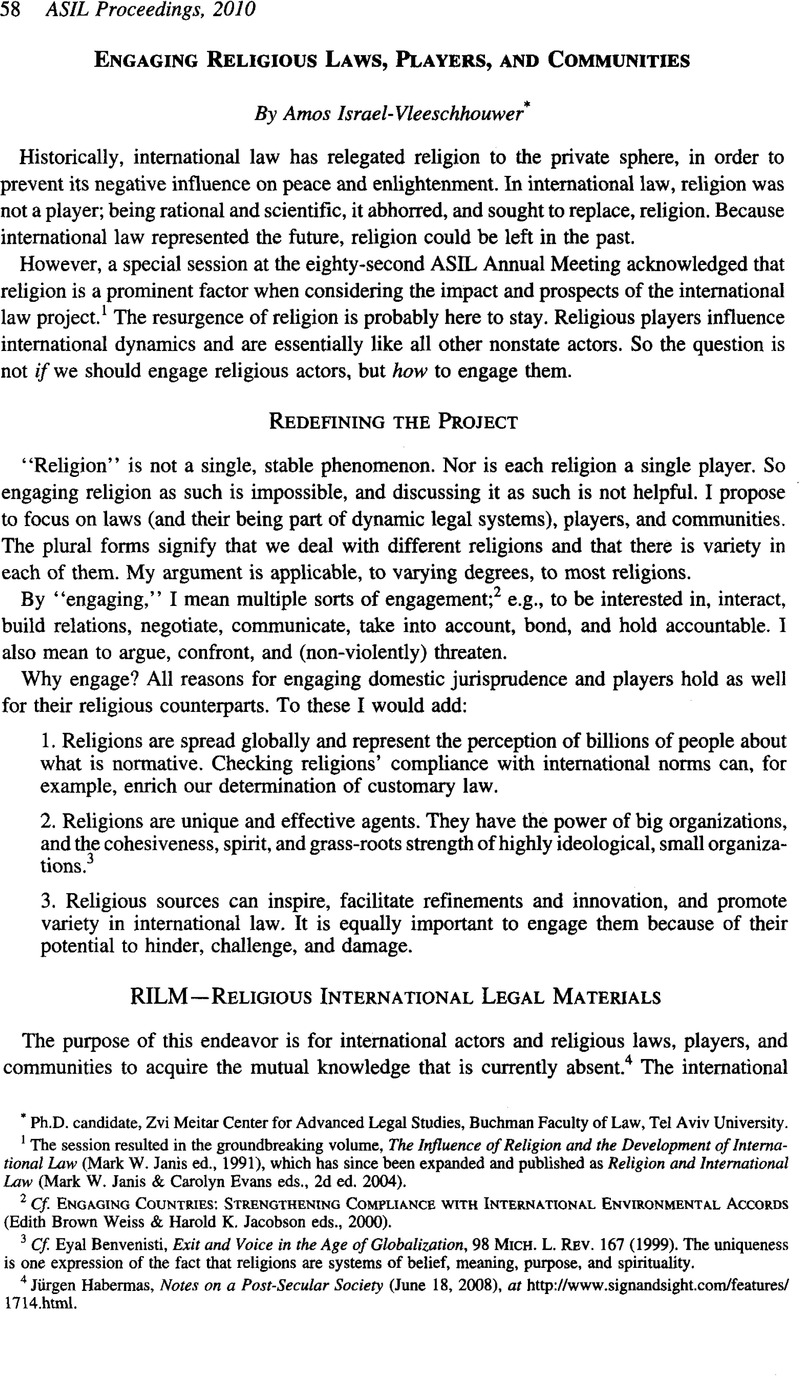No CrossRef data available.
Published online by Cambridge University Press: 28 February 2017

1 The session resulted in the groundbreaking volume, The Influence of Religion and the Development of International Law (Janis, Mark W. ed., 1991)Google Scholar, which has since been expanded and published as Religion and International Law (Janis, Mark W. & Evans, Carolyn eds., 2d ed. 2004 Google Scholar).
2 Cf. Engaging Countries: Strengthening Compliance with International Environmental Accords (Edith Brown Weiss & Harold K. Jacobson eds., 2000).
3 Cf. Benvenisti, Eyal, Exit and Voice in the Age of Globalization, 98 Mich. L. Rev. 167 (1999)CrossRefGoogle Scholar. The uniqueness is one expression of the fact that religions are systems of belief, meaning, purpose, and spirituality.
4 Jürgen Habermas, Notes on a Post-Secular Society (June 18, 2008), at http://www.signandsight.com/features/ 1714.html.
5 This raises methodological questions. For example, what constitutes a legal religious text? What is the status of intra-religious dissent? Should religious material be part of the ILM and ILR volumes, or organized according to issues, geography, or religions?
6 David Berreby, Us and Them: the Science of Identity (2008).
7 See Sunstein, Cass R., Deliberative Trouble? Why Groups Go to Extremes, 110 Yale L.J. 71 (2000)CrossRefGoogle Scholar; Eli Berman, Radical, Religious, and Violent: the New Economics of Terrorism (2009).
8 See Sunder, Madhavi, Piercing the Veil, 112 Yale L.J. 1399 (2003)CrossRefGoogle Scholar.
9 In my proposal, states do not lose their prominence. They are like hubs in networks—nodes (players) that have more power, mediate more relations, and have more power. The proposed model is based on system theory, economic approaches to self-regulating systems, and international legal pluralism. See, e.g., Blank, Yishai, The City and the World, 44 Colum. J. Transnat’l L. 875 (2006)Google Scholar; Merry, Sally Engle, International Law and Sociolegal Scholarship: Toward a Spatial Global Legal Pluralism, 41 Stud. L. Pol. & Soc’y 149 (2008)Google Scholar.
10 Berman, supra note 7.